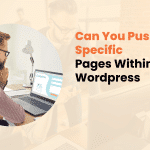In today’s digital marketplace, having a well-designed ecommerce website is crucial for business success. As online shopping continues to grow, companies must adapt their web presence to meet evolving customer expectations and stay ahead of the competition.
At Designs by Dave O., we’ve helped countless businesses create extraordinary ecommerce platforms that drive results. In this comprehensive guide, we’ll explore the top 10 ecommerce website design best practices that can help your online store thrive in 2024 and beyond.
1. The Foundation: Mobile-First Responsive Design
The importance of mobile-friendly design cannot be overstated in today’s ecommerce landscape. With mobile devices accounting for over 60% of online shopping traffic, a mobile-first approach is no longer optional – it’s essential.
A mobile-first responsive design ensures that your website looks and functions seamlessly across all devices, from smartphones to tablets to desktop computers. This approach not only improves user experience but also positively impacts your search engine rankings, as Google prioritizes mobile-friendly websites in its search results.
Key benefits of mobile-first responsive design:
- Improved user experience across all devices
- Higher search engine rankings
- Reduced bounce rates and increased time on site
- Better conversion rates on mobile devices
At Designs by Dave O., we prioritize mobile-first design in all our ecommerce projects, ensuring that your customers have a smooth shopping experience regardless of the device they’re using.

2. Streamlined Navigation and Intuitive User Interface
An easy-to-navigate website is crucial for keeping potential customers engaged and guiding them towards a purchase. A well-structured navigation system helps users find what they’re looking for quickly and effortlessly.
Consider implementing these navigation best practices:
- Clear and concise category structure
- Prominent search bar with autocomplete functionality
- Filters and sorting options for product listings
- Breadcrumb navigation for easy backtracking
An intuitive user interface goes hand-in-hand with streamlined navigation. Ensure that your website’s design is clean, uncluttered, and follows established UI conventions. This familiarity helps users feel comfortable and confident while browsing your store.
3. High-Quality Product Imagery and Videos
In the absence of physical interaction, high-quality visuals are essential for showcasing your products effectively. Invest in professional product photography and videography to give customers a clear and detailed view of what they’re considering purchasing.
Best practices for product imagery:
- Use high-resolution images that allow for zooming
- Provide multiple angles of each product
- Include lifestyle shots to show products in context
- Maintain consistent image styles across your catalog
Videos can take your product presentations to the next level. Consider creating:
- 360-degree product views
- Demonstration videos
- Unboxing experiences
- Customer testimonial videos
Innovative technologies like augmented reality (AR) are also becoming increasingly popular in ecommerce. AR allows customers to visualize products in their own space, which can significantly increase confidence in purchasing decisions, especially for items like furniture or home decor.

4. Compelling and SEO-Optimized Product Descriptions
Well-crafted product descriptions serve two crucial purposes: they inform and persuade potential customers while also helping your products rank in search engine results. Striking the right balance between informative content and SEO best practices is key to creating effective product descriptions.
When writing product descriptions:
- Focus on benefits as well as features
- Use customer-centric language that addresses pain points
- Include relevant keywords naturally throughout the text
- Break up text with bullet points for easy scanning
Remember that each product description is an opportunity to showcase your brand voice and connect with your target audience. At Designs by Dave O., we work closely with our clients to develop product descriptions that not only rank well in search results but also resonate with their ideal customers.
5. Streamlined Checkout Process
A complicated or lengthy checkout process is one of the primary reasons for cart abandonment. To increase conversions, focus on creating a smooth, friction-free path to purchase.
Key elements of a streamlined checkout:
- Offer guest checkout options
- Minimize the number of form fields
- Provide clear progress indicators
- Include multiple payment options (credit cards, PayPal, Apple Pay, etc.)
- Display security badges and SSL certificates prominently
Consider implementing a one-page checkout design, which can significantly reduce abandonment rates by simplifying the process. Additionally, offering features like saved payment information for returning customers can further expedite the checkout experience.

6. Personalization and AI-Driven Recommendations
Personalization has become a cornerstone of successful ecommerce strategies. By tailoring the shopping experience to individual users, you can increase engagement, average order value, and customer loyalty.
Implement personalization through:
- Personalized product recommendations based on browsing history
- Tailored email marketing campaigns
- Dynamic content that adapts to user preferences
- Customized promotions and offers
AI-powered recommendation engines can analyze user behavior and purchase history to suggest relevant products, increasing the likelihood of additional purchases. These systems can also help with cross-selling and upselling by recommending complementary items or upgraded versions of products.
7. Trust Signals and Social Proof
Building trust is crucial in ecommerce, where customers can’t physically interact with products before purchasing. Incorporating various trust signals throughout your website can help alleviate concerns and increase confidence in your brand.
Effective trust-building elements include:
- Customer reviews and ratings
- Security badges and certifications
- User-generated content (photos, videos, testimonials)
- Clear return and refund policies
- Contact information and live chat support
Displaying social proof, such as the number of products sold or customer testimonials, can also significantly impact purchasing decisions. Consider featuring case studies or success stories that showcase how your products have benefited other customers.

8. Performance Optimization
Website speed and performance play a critical role in both user experience and search engine rankings. A slow-loading website can lead to high bounce rates and lost sales.
To improve your site’s performance:
- Optimize images and videos for web
- Minimize HTTP requests
- Use browser caching
- Implement a content delivery network (CDN)
- Regularly monitor and update your site’s performance
At Designs by Dave O., we prioritize performance optimization in all our ecommerce projects, ensuring that your website loads quickly and functions smoothly, even during high-traffic periods.
9. Engaging Content Marketing Integration
Content marketing can be a powerful tool for driving traffic to your ecommerce site and establishing your brand as an authority in your industry. Integrating valuable content into your ecommerce platform can enhance the overall shopping experience and support your SEO efforts.
Consider incorporating:
- Blog posts and articles related to your products
- Buying guides and how-to content
- Video content for product demonstrations
- User-generated content and customer stories
Ensure that your content strategy aligns with your overall ecommerce goals and provides genuine value to your target audience. Well-executed content marketing can help build trust, educate customers, and ultimately drive more sales.

10. Data-Driven Design and Continuous Improvement
The most successful ecommerce websites are those that continuously evolve based on data and user feedback. Implementing analytics tools and conducting regular user testing can provide valuable insights into how customers interact with your site and where improvements can be made.
Key areas to focus on:
- A/B testing of design elements and copy
- Heat mapping and user session recordings
- Conversion funnel analysis
- Customer feedback surveys
Use these insights to make informed decisions about design changes, feature additions, and overall site improvements. Remember that ecommerce website design is an ongoing process, and staying responsive to user needs and market trends is crucial for long-term success.
Conclusion
Implementing these top 10 e-commerce website design best practices can significantly improve your online store’s performance and drive more sales. However, creating a truly exceptional e-commerce experience requires expertise, creativity, and a deep understanding of both design principles and consumer behaviour.
At Designs by Dave O., we specialize in crafting custom e-commerce solutions that not only look great but also deliver tangible results for businesses of all sizes. Our team of experts can help you navigate the complexities of e-commerce design and create a website that stands out in today’s competitive online marketplace.
If you’re looking to take your e-commerce presence to the next level, we’d love to hear from you. Contact Designs by Dave O. today to learn how we can help you create an extraordinary online shopping experience that drives growth and success for your business.






